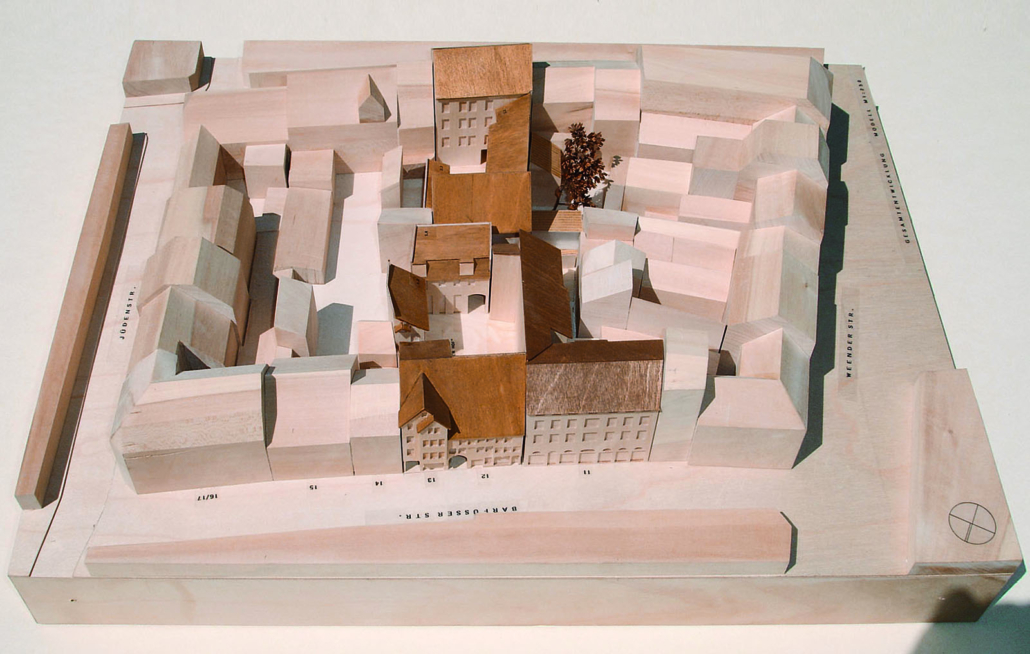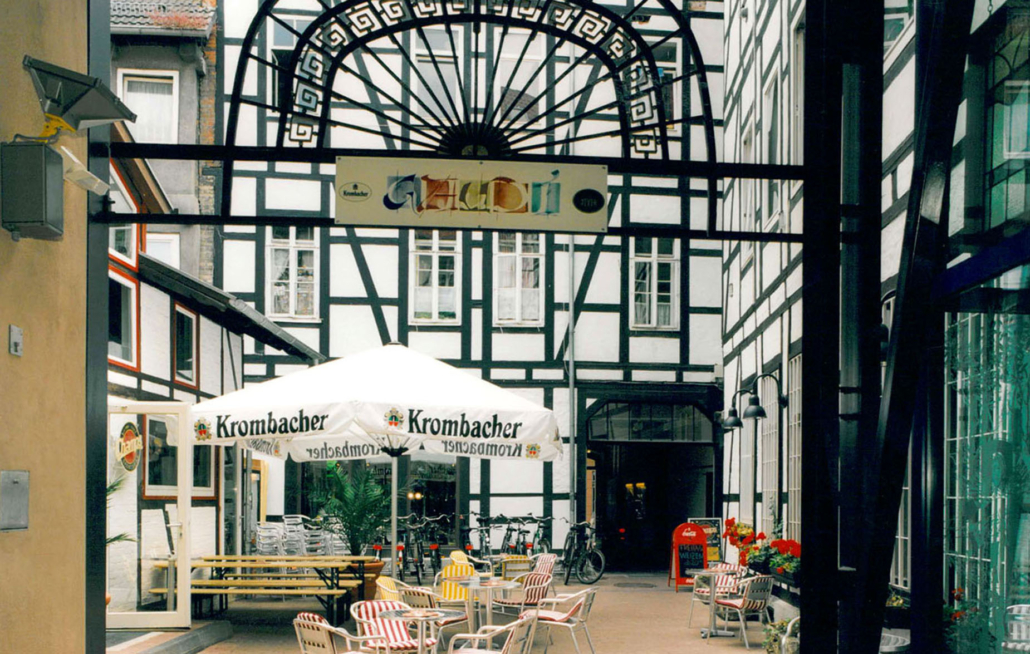Börner Quarter Göttingen
Haus Börner, the first half-timbered house of the Renaissance in Göttingen dating from 1539, is today the entrance to the Grüner Hof and the Steinernen Hof between Barfüßer Straße and Rote Straße in Göttingen’s old town.
The aim was to preserve as much of the old building fabric as possible in order to preserve the character and charm of this unique ensemble, where in the 19th century, among other trades, the Börner meat factory had set up shop.
Prize award in the federal competition “New Life in Old Buildings”, exhibition staged by the German Architecture Museum Frankfurt/ M., 2000
The time is ripe for a new life in the city centre
The key to the city is the enthusiasm to live in it, to enjoy its benefits and, moreover, to find a diverse offer. We have always sought challenges. We were able to realise a concept in the Rotenstrasse and Barfüßer Strasse. It took us two years to complete. The work has been extraordinarily satisfying. First we were looking for a concept and sketched out a vision. Then the practical issues took us up. Once the identifiable problems were solved, deadlines had to be planned and met, and bold decisions had to be made quickly. This process was not always easy, often nerve-racking, sorrowful, but also fulfilling.
In the architect Hansjochen Schwieger, with whom I have had a very friendly working relationship for many years, I have found a partner to whom the demolition or destruction of an old building feels like self-harm, just as it does to me.
Upheaval and change are firmly anchored in this neighbourhood – in this neighbourhood. Just as in times gone by the city constantly adapted to the needs of its inhabitants, we are making a serious effort to shape a new environment that offers exchanges of information and opinions and good food. Visitors to this neighbourhood encounter the new and the old. A neighbourhood that has its own special character. The challenge is to use this character as a basis and gradually – during the construction period and in the future – to enliven it with something of our own. As you can see, it is not essential for the overall design to create new, fashionable architecture. The predominantly old next to new decorative ambience, forms the special and fascinating contrast we expect. The tension of the old and the new runs like an electric current through the whole quarter. Some recent, considerably more comprehensive examples of modern urban architecture are a good illustration of how harmoniously the old and the new blend together:
- Paris train station
- Musee d’Orsay
- Harbour storage in London
- Fleetinsel in Hamburg.
I would like to talk again about the neutral structures and the materials of the neighbourhood and its facilities. Together with the colours, they form an effective alliance. They literally blend together so that the colour does not distract but becomes part of the structure, the patterns and especially the mood of the whole.
The builder Heinz Peter Adams in June 1998
model
view to passage
Inner Courtyard






